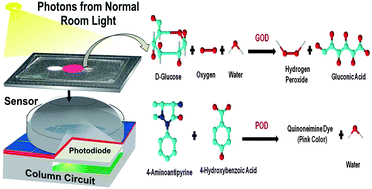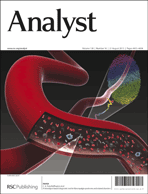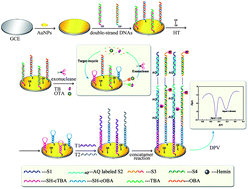During the months April – June, the following articles are in the Top Ten most accessed:-
Electrogenerated chemiluminescence of nanomaterials for bioanalysis
Shengyuan Deng and Huangxian Ju
Analyst, 2013,138, 43-61
DOI: 10.1039/C2AN36122A
Electrogenerated chemiluminescence detection of trace level pentachlorophenol using carbon quantum dots
Jiezhen Li, Niya Wang, ThanhThuy Tran.T, Chen’an Huang, Lan Chen, Lijuan Yuan, Liping Zhou, Rui Shen and Qingyun Cai
Analyst, 2013,138, 2038-2043
DOI: 10.1039/C3AN36653G
Metabolomics study on Fuzi and its processed products using ultra-performance liquid-chromatography/electrospray-ionization synapt high-definition mass spectrometry coupled with pattern recognition analysis
Hui Sun, Bei Ni, Aihua Zhang, Mo Wang, Hui Dong and Xijun Wang
Analyst, 2012,137, 170-185
DOI: 10.1039/C1AN15833C
Upconversion nanoparticles in biological labeling, imaging, and therapy
Feng Wang, Debapriya Banerjee, Yongsheng Liu, Xueyuan Chen and Xiaogang Liu
Analyst, 2010,135, 1839-1854
DOI: 10.1039/C0AN00144A
Quantum dots for fluorescent biosensing and bio-imaging applications
Jingjing Lia and Jun-Jie Zhu
Analyst, 2013,138, 2506-2515
DOI: 10.1039/C3AN36705C
A real-time colorimetric and ratiometric fluorescent probe for sulfite
Ming-Yu Wu, Ting He, Kun Li, Ming-Bo Wu, Zheng Huang and Xiao-Qi Yu
Analyst, 2013,138, 3018-3025
DOI: 10.1039/C3AN00172E
A turn-on fluorescent probe for detection of tyrosinase activity
Changcheng Wang, Shengyong Yan, Rong Huang, Shuo Feng, Boshi Fu, Xiaocheng Weng and Xiang Zhou
Analyst, 2013,138, 2825-2828
DOI: 10.1039/C3AN00272A
A ratiometric fluorescent probe based on a BODIPY–DCDHF conjugate for the detection of hypochlorous acid in living cells
Jeesook Park, Hyunjin Kim, Yongdoo Choi and Youngmi Kim
Analyst, 2013,138, 3368-3371
DOI: 10.1039/C3AN36820C
Electrochemical impedance spectroscopy versus cyclic voltammetry for the electroanalytical sensing of capsaicin utilising screen printed carbon nanotube electrodes
Edward P. Randviir, Jonathan P. Metters, John Stainton and Craig E. Banks
Analyst, 2013,138, 2970-2981
DOI: 10.1039/C3AN00368J
ATR-FTIR spectroscopic imaging: recent advances and applications to biological systems
Sergei G. Kazarian and K. L. Andrew Chan
Analyst, 2013,138, 1940-1951
DOI: 10.1039/C3AN36865C
Why not take a look at the articles today and blog your thoughts and comments below.
Fancy submitting an article to Analyst? Then why not submit to us today or alternatively email us your suggestions.

















